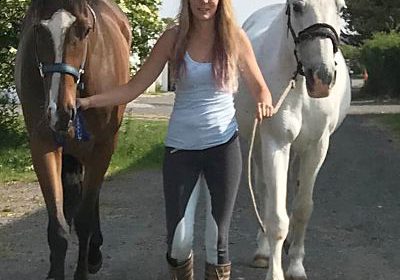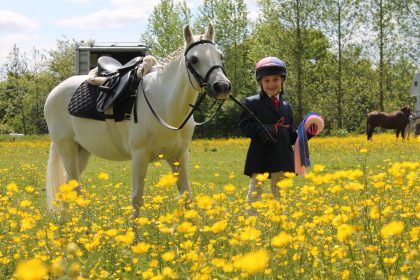The secret that is ‘strangles’
A horse may become infected and carry the disease – yet it may show no symptoms at all. Your horse could become infected by having contact with a ‘carrier’. It is important to realise that a horse does not have to show symptoms to be a secret carrier of the disease.
Carriers will have pus in their guttural pouches that has not been completely eliminated, and the bacteria in this pus can survive for months or even years. Richard Newton, BVSc, MSc, PhD, FRCVS said that ‘a horse might have recovered from strangles 10 years earlier, then board a plane and infect his fellow passengers and other horses in a country’s quarantine unit, causing a new outbreak in a foreign country. While the scenario might seem extreme, the movement of carrier horses is what’s likely to propagate the disease in modern times’.
Horses are bought and sold all the time so naturally the disease spreads – there is little we can do about this. Horses are brought over from Ireland and Europe regularly so if a carrier is in the area from where they originate, or on the boat or plane etc., it stands to reason strangles will arrive in our home port and spread around the country. It is the same as covid really.
This means that the horse you met at the show last week or the horse and rider you stopped to chat to when out on a hack or on the sponsored ride a few days ago, or who came into the yard to visit or who you met at the clinic could be a carrier.
The carrier can shed out the infection from his or her nose intermittently. When this happens it can cause other animals to become infected – the longest recorded time it has taken to eradicate the infection in a carrier is three-and-a-half years. The disease does not last that long on surfaces but it does spread to other horses from touching and nasal aerosol drops from coughs and sneezes – just like covid in fact.
A sneeze from a horse can spread 30 or more yards/meters and if there is a breeze, it is a great deal further. Cleanliness around the yard is vital at times like this. A close eye needs to be kept on all horses for any signs.
One vet said “People often know their horses so well, they’re picking up on strangles well before it gets to the abscess stage, without actually knowing what they’re dealing with,” she says. “That helps catch it early and keep it from spreading”.
The main problem is that people do not like to admit they have a horse with strangles on their yard so they do not tell anyone – this means it spreads much more quickly and will spread to more and more people because of one yard not telling everyone locally.
Let’s get a picture of what is happeing around the country!
Make a comment on the original post and state your area – no naming of yards or villages or people – just the area – click the link to get back to Lingfield fb page and look for the post on 30th APRIL https://www.facebook.com/LingfieldEquineDistanceLearning/ Once you have it in your yard:
It is TOTALLY irresponsible to keep it a secret.
It is NOT your fault you have strangles at the yard. It cannot be avoided. Do not keep it a secret. Quarantine your yard. It is morally wrong to keep it a secret – you are simply allowing other horses to become infected and seriously ill – and possibly die. Think covid protocol – put your yard on lockdown for a short time.
Do not go out of the yard with your horse. Wash clothes and boots used at the yard – use overalls if possible. Have disinfectant boot bath at gate for all who come and go. Visiting dogs should not be allowed in the yard or fields Take all deliveries at the gate – do not allow delivery drivers in. Let people know they must not visit No one should leave the yard with their horse until the last horse to become infected is cleared by your vet – it will be weeks UNLESS you keep on top of biosecurity as described above.
An eminent vet suggests a “traffic light” colour coding system to help owners deal with outbreaks.
Tag all sick horses and their equipment RED
Tag all healthy, unexposed horses and their equipment GREEN
Tag all healthy but exposed horses and their equipment YELLOW
Take all horses’ temperatures twice a day.
As soon as there’s a temperature rise in a yellow or green horse, switch it and its equipment to the “red” group.
Students taking either our Accredited Equine First Aid & Ailments course or the Intermediate Diploma will already have full information on handling strangles. The BHS website provides clinical signs High temperature, above 38.5°C Lethargy/dull and depressed Reluctance to eat/drink, difficulty swallowing and/or a lowered head and neck A cough (although not always present or as common) Thick and discoloured nasal discharge Swelling of the glands under the jaw (lymph nodes), in the space between the head and neck, or on the head or neck which may lead to the formation of abscesses



Receive latest news and industry insights straight to your inbox.